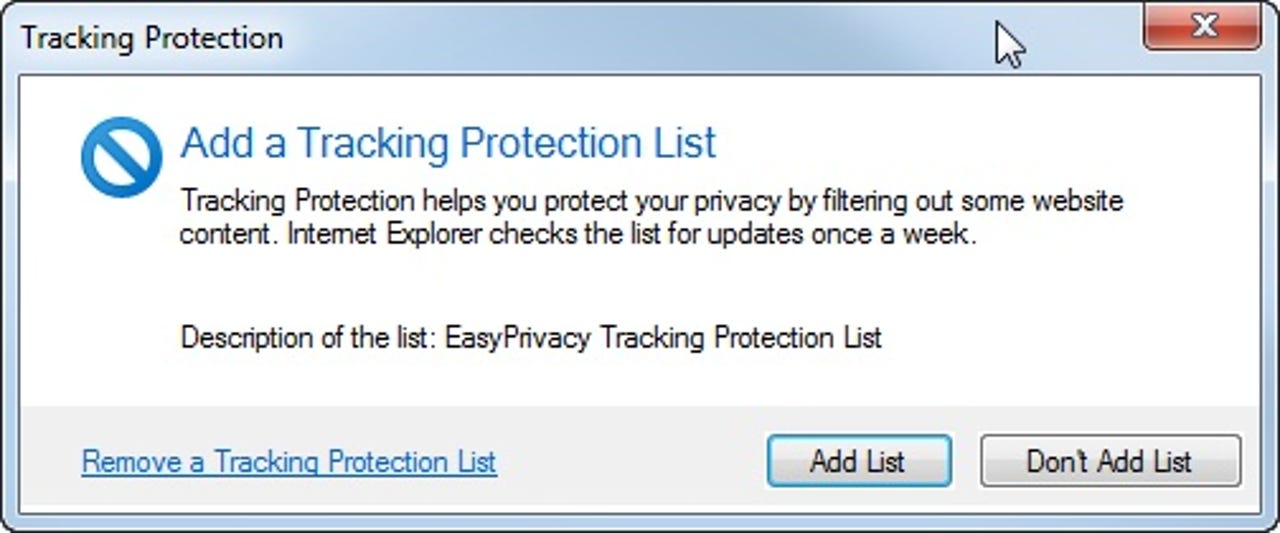A tour of IE9's tracking protection


IE9 tracking protection list
With the release candidate of Internet Explorer 9 (IE9), Microsoft added a feature to prevent sites from tracking a user's browsing activity. Tracking protection uses a list to tell IE9 which third-party page elements to block and which to allow, and covers elements such as ads and embedded widgets.
For example, a page could include third-party ads, each with a tracking pixel, from two sites: Xyz-ads.com and Abc-analytics.com. As Xyz-ads.com is on a block list, no request is sent to its server and the space where it should appear is left blank. However, Abc.analytics.com is on an allow list, so the request to the server goes through.
When you click a link to install a tracking protection list (TPL), a snippet of JavaScript displays this dialogue box (above). If you click add list, the list is installed for immediate use by IE9.
Managing tracking protection lists
Users can install multiple tracking protection lists. From the manage add-ons dialog box, you can enable or disable any installed list at any time. You can also inspect the contents of any tracking protection list (TPL), copy it to the clipboard, or remove the list completely.
Inside a tracking protection list
When you select a TPL and click the more information link, you see the contents of the installed list in this dialog box. Click copy if you want to paste the contents of the list into a text editor for a more detailed examination or to modify for your own use.
Where TPLs are stored
You'll find TPLs stored in this subfolder. Note that lists are stored in the user's profile. If you want to enable tracking protection for multiple user accounts, you must customise each one individually.
Disable tracking protection
In some cases, tracking protection can cause problems for a site. If that is the case, click the blue content filtering icon in the address bar. The dialogue box that appears will vary according to your current settings, but should allow you to disable tracking protection for that site.
This story originally appeared as Internet Explorer 9 Tracking Protection: how it works on ZDNet.com.
Get the latest technology news and analysis, blogs and reviews delivered directly to your inbox with ZDNet UK's newsletters.